Copper might be a powerhouse industrial metal, but as an investment, it’s a volatile, high-risk gamble with better alternatives waiting in the wings.
Copper has long been hailed as a cornerstone of industrial development, fueling the electrification of modern economies and the expansion of infrastructure worldwide. With demand surging across sectors like renewable energy, electric vehicles, and urbanization, many investors see it as an essential commodity with undeniable long-term value. But while copper’s role in the global economy is clear, its attractiveness as an investment is far less certain. This article takes a hard look at the risks that often go unnoticed—ranging from extreme price volatility to supply chain instability—so you can assess whether copper truly belongs in your portfolio. Before diving into the investment pitfalls, let’s break down why the metal has captured investor interest in the first place.
Volatility in Copper Prices
Copper prices have always had a mind of their own, swinging between record highs and painful crashes with little warning. Historically, the metal has shown extreme sensitivity to macroeconomic shifts—booming when industrial activity is strong, then plummeting the moment economic uncertainty creeps in. Take the 2021 rally when copper surged past $10,000 per ton on supply fears, only to tumble over 30% within months as global demand softened. These price swings aren't just a headache for miners; they make copper a risky bet for investors hoping for steady long-term gains. Without predictable price stability, holding copper assets can feel more like a game of chance than a strategic investment.
Beyond historical volatility, copper faces a unique supply-demand challenge that adds fuel to the fire. On one side, global demand for copper in electrification and renewable energy continues to rise, promising long-term relevance. On the other, supply-side constraints—from labor strikes to unpredictable mining output—create erratic shortages that push prices in unpredictable directions. Speculative trading only amplifies the chaos, with hedge funds and commodity traders piling into copper futures, driving exaggerated price movements that rarely reflect true market fundamentals. The result? An asset that fluctuates wildly, leaving even seasoned investors guessing where it’ll land next. Copper might be essential to the future of energy, but as an investment, it’s anything but stable.
Macroeconomic Sensitivity
Copper isn’t just another industrial metal—it’s the economy’s canary in the coal mine. When times are good and factories are humming, demand for copper skyrockets, sending prices higher. But when a recession rears its head, copper is one of the first to take the hit. That’s because copper is deeply tied to global construction, manufacturing, and electrification—all sectors that slow down when consumer spending drops and businesses tighten their belts. Investors who hold copper need to brace for these economic whiplashes, because when downturns hit, copper prices don’t just dip—they crater. If you're looking for stability, this metal plays more like a rollercoaster than a reliable investment.
And if inflation, interest rates, and central bank policies weren’t already making copper investors sweat, let’s talk about China. As the world’s largest consumer of copper, China’s demand dictates market movements. When Beijing ramps up infrastructure spending, copper prices surge. But when economic growth slows—or, worse, when property markets shake—demand shrinks, sending copper prices tumbling. Emerging markets like India are playing a bigger role, but they’re not large enough yet to offset China’s dominance. If your investment strategy hinges on predicting global economic health, copper might seem tempting—but in reality, it reacts to every macroeconomic tremor, making it one of the riskiest commodities to bet on.
Supply Chain Risks
Copper mining isn’t just about extracting metal from the earth—it’s a geopolitical chess game, and lately, the board has been looking shaky. The biggest copper producers, including Chile, Peru, and the Democratic Republic of Congo, have all faced rising political instability, leading to supply disruptions and investor uncertainty. Nationalization threats, regulatory shifts, and changing tax policies keep miners on edge, while governments attempt to balance economic growth with resource control. When political tensions rise, mining companies take the hit, sending copper prices into unpredictable territory. For investors, this means betting on copper isn’t just about market trends—it’s about navigating a global power struggle where supply can evaporate overnight.
And if geopolitical risks weren’t enough, let’s talk about labor strikes and environmental regulations—two forces that have repeatedly slammed copper production. Worker strikes in major mines can halt operations for weeks, cutting global supply and causing price spikes that rarely sustain themselves. Meanwhile, rising environmental scrutiny has pushed governments to enforce stricter regulations on copper extraction. With growing concerns over carbon emissions, water usage, and land degradation, many mines face tighter restrictions—or worse, outright closures. As nations double down on ESG policies, copper’s future supply is looking anything but stable. Investors chasing the next commodity boom might be eyeing copper, but if supply chains remain this fragile, the risk might outweigh the reward.
Sustainability Concerns and ESG Regulations
Copper mining may be fueling the future, but it’s leaving a mess behind, and the world is starting to take notice. Massive energy consumption, water depletion, and habitat destruction make copper extraction one of the least environmentally friendly processes in the mining sector. As scrutiny grows, investors are realizing that copper’s green energy narrative doesn’t erase the environmental damage tied to its production. Governments and advocacy groups have ramped up pressure on miners to reduce emissions, limit water usage, and restore ecosystems, adding costly compliance hurdles to the industry. Mining companies that can’t adapt risk facing fines, shutdowns, or losing access to key markets. What was once a straightforward commodity play is now tangled in environmental red tape, making copper a tough bet for long-term investors seeking stability.
Regulations surrounding ESG compliance are tightening, and the copper industry is right in the crosshairs. Mining companies are being pushed to clean up their operations, but the reality is that sustainable mining comes at a steep price—one that can eat into profitability. As ESG reporting requirements become stricter, some investors are turning away from copper in favor of greener alternatives. Recycled copper is gaining traction, reducing dependence on freshly mined metal, while aluminum and graphene-based materials are emerging as viable substitutes in electrical applications. As industries shift toward sustainable solutions, copper's dominance isn’t guaranteed, and investors should question whether the metal’s future will shine as brightly as its past.
Market Saturation and Competition
Copper’s reign as the king of industrial metals might not be as secure as investors think, and the cracks in its dominance are starting to show. For years, miners doubled down on production, chasing the dream of soaring demand in electrification and infrastructure. Now, with new mines ramping up output, the industry is facing a harsh reality—too much copper, not enough buyers. Oversupply is killing price momentum, and the more copper hits the market, the weaker the investment case becomes. Just look at the recent push to expand mining in regions like Africa and South America. These projects were supposed to be cash cows, but instead, they’re flooding the market with excess supply, dragging prices lower and making profitability a dicey proposition.
But here’s where it gets even worse for copper loyalists: it’s not just oversupply that’s eating away at copper’s dominance—it’s the future itself. Graphene is breaking barriers in conductivity, composite materials are becoming stronger and lighter, and lithium is running the show in energy storage. Copper might be the go-to for wiring today, but industries are actively exploring alternatives that reduce reliance on the metal altogether. And let’s talk about recycling—because if there’s one thing crushing primary mining demand, it’s the fact that scrap copper is easier and cheaper to use. Instead of digging massive holes in the earth, companies are melting down existing copper stock, bypassing the costs and headaches of fresh extraction. So while investors are still clinging to copper as an untouchable commodity, the reality is shifting—oversupply, substitution, and recycling are rewriting the narrative, and copper might not be the future everyone once thought it was.
Investment Alternatives
Copper might be losing its shine, but that doesn’t mean investors have to ditch commodities altogether—there are plenty of ways to play the metals game without riding copper’s rollercoaster. One of the best strategies? Diversification. Instead of banking on a single metal with wild price swings, savvy investors spread their bets across a mix of commodities. This reduces risk and smooths out returns because while copper might be having a bad year, other metals—like nickel, lithium, or rare earth elements—could be surging. Smart allocation means you’re not left holding the bag when copper takes another dive.
And if you’re looking for alternatives that bring a little more stability, industrial metals like nickel and lithium are grabbing investor attention for good reason. Lithium is the backbone of battery technology, fueling everything from electric vehicles to energy storage, while nickel plays a critical role in stainless steel and high-performance alloys. Rare earth elements? They’re the secret sauce behind everything from electronics to defense systems, and demand is only growing. For those who want exposure without the headache of physical commodity prices, mining stocks and ETFs offer an easy way in. Instead of navigating copper’s volatility, you can invest in diversified funds or individual companies that balance risk across multiple metals—letting you ride the commodity wave without the crash. Copper might be losing momentum, but the metals market is full of winners. Time to start looking at them.
Final Thoughts
Copper might have the sparkle of an essential industrial metal, but when you pull back the curtain, the investment case isn’t as bulletproof as it seems. Between brutal price swings, geopolitical instability, and the growing threat of substitutes, betting on copper feels more like trying to time a market crash than building a reliable portfolio. Supply-chain chaos, environmental red tape, and overproduction only add fuel to the fire, making it a tough asset for everyday investors looking for stability.
That said, copper isn’t completely off the table—if you’re a long-term institutional investor with the patience (and capital) to ride out its volatility, there’s still potential upside. Those with deep pockets, strategic hedging, and a stomach for commodity swings might find value in copper’s long-term demand story. But for most investors, the risks far outweigh the rewards. The metals market is full of stronger plays, and chasing copper’s shaky future might not be the smartest move. Sometimes, knowing when not to invest is just as important as knowing what to buy.
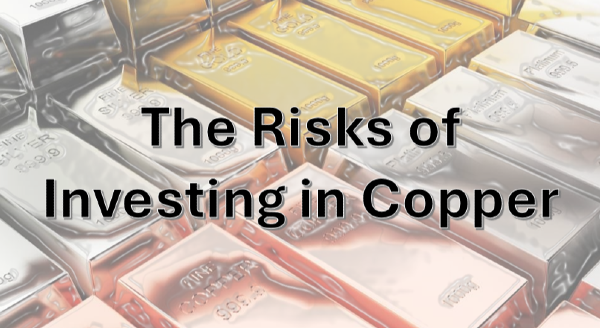












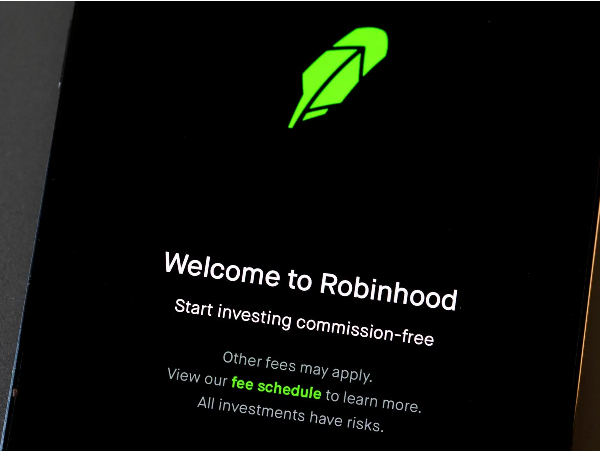



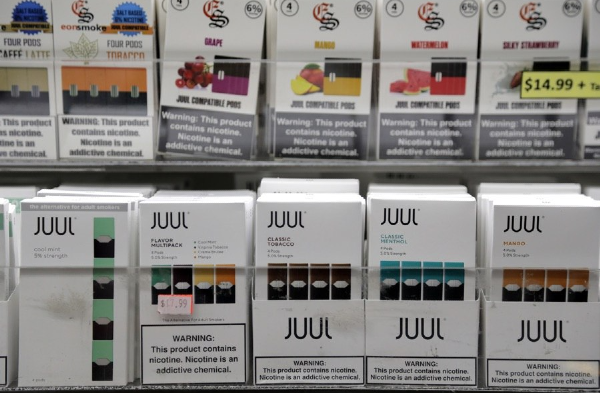
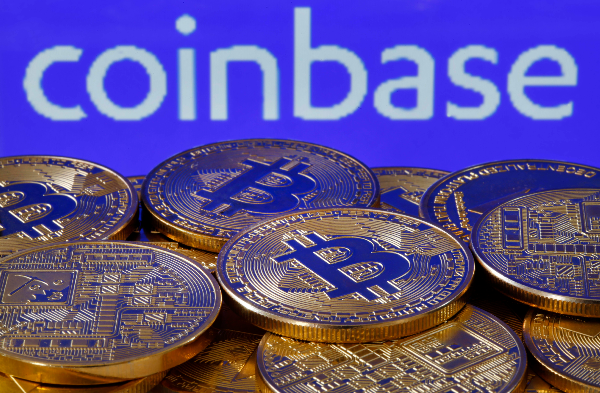
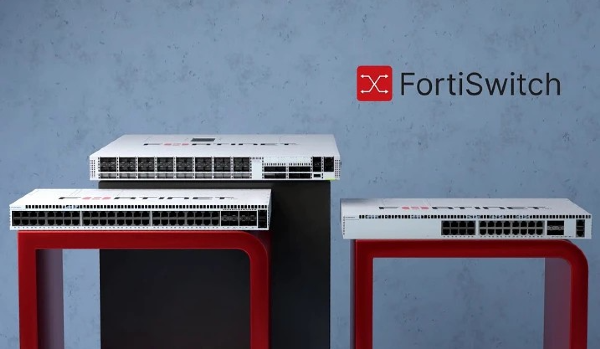
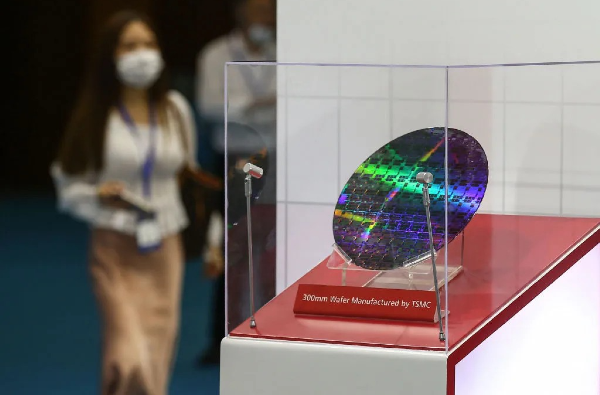
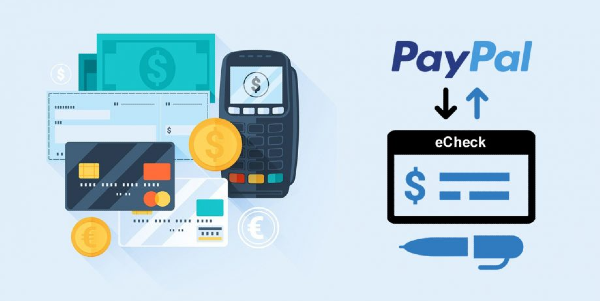








Copper has long been hailed as a cornerstone of industrial development, fueling the electrification of modern economies and the expansion of infrastructure worldwide. With demand surging across sectors like renewable energy, electric vehicles, and urbanization, many investors see it as an essential commodity with undeniable long-term value. But while copper’s role in the global economy is clear, its attractiveness as an investment is far less certain. This article takes a hard look at the risks that often go unnoticed—ranging from extreme price volatility to supply chain instability—so you can assess whether copper truly belongs in your portfolio. Before diving into the investment pitfalls, let’s break down why the metal has captured investor interest in the first place.
Volatility in Copper Prices
Copper prices have always had a mind of their own, swinging between record highs and painful crashes with little warning. Historically, the metal has shown extreme sensitivity to macroeconomic shifts—booming when industrial activity is strong, then plummeting the moment economic uncertainty creeps in. Take the 2021 rally when copper surged past $10,000 per ton on supply fears, only to tumble over 30% within months as global demand softened. These price swings aren't just a headache for miners; they make copper a risky bet for investors hoping for steady long-term gains. Without predictable price stability, holding copper assets can feel more like a game of chance than a strategic investment.
Beyond historical volatility, copper faces a unique supply-demand challenge that adds fuel to the fire. On one side, global demand for copper in electrification and renewable energy continues to rise, promising long-term relevance. On the other, supply-side constraints—from labor strikes to unpredictable mining output—create erratic shortages that push prices in unpredictable directions. Speculative trading only amplifies the chaos, with hedge funds and commodity traders piling into copper futures, driving exaggerated price movements that rarely reflect true market fundamentals. The result? An asset that fluctuates wildly, leaving even seasoned investors guessing where it’ll land next. Copper might be essential to the future of energy, but as an investment, it’s anything but stable.
Macroeconomic Sensitivity
Copper isn’t just another industrial metal—it’s the economy’s canary in the coal mine. When times are good and factories are humming, demand for copper skyrockets, sending prices higher. But when a recession rears its head, copper is one of the first to take the hit. That’s because copper is deeply tied to global construction, manufacturing, and electrification—all sectors that slow down when consumer spending drops and businesses tighten their belts. Investors who hold copper need to brace for these economic whiplashes, because when downturns hit, copper prices don’t just dip—they crater. If you're looking for stability, this metal plays more like a rollercoaster than a reliable investment.
And if inflation, interest rates, and central bank policies weren’t already making copper investors sweat, let’s talk about China. As the world’s largest consumer of copper, China’s demand dictates market movements. When Beijing ramps up infrastructure spending, copper prices surge. But when economic growth slows—or, worse, when property markets shake—demand shrinks, sending copper prices tumbling. Emerging markets like India are playing a bigger role, but they’re not large enough yet to offset China’s dominance. If your investment strategy hinges on predicting global economic health, copper might seem tempting—but in reality, it reacts to every macroeconomic tremor, making it one of the riskiest commodities to bet on.
Supply Chain Risks
Copper mining isn’t just about extracting metal from the earth—it’s a geopolitical chess game, and lately, the board has been looking shaky. The biggest copper producers, including Chile, Peru, and the Democratic Republic of Congo, have all faced rising political instability, leading to supply disruptions and investor uncertainty. Nationalization threats, regulatory shifts, and changing tax policies keep miners on edge, while governments attempt to balance economic growth with resource control. When political tensions rise, mining companies take the hit, sending copper prices into unpredictable territory. For investors, this means betting on copper isn’t just about market trends—it’s about navigating a global power struggle where supply can evaporate overnight.
And if geopolitical risks weren’t enough, let’s talk about labor strikes and environmental regulations—two forces that have repeatedly slammed copper production. Worker strikes in major mines can halt operations for weeks, cutting global supply and causing price spikes that rarely sustain themselves. Meanwhile, rising environmental scrutiny has pushed governments to enforce stricter regulations on copper extraction. With growing concerns over carbon emissions, water usage, and land degradation, many mines face tighter restrictions—or worse, outright closures. As nations double down on ESG policies, copper’s future supply is looking anything but stable. Investors chasing the next commodity boom might be eyeing copper, but if supply chains remain this fragile, the risk might outweigh the reward.
Sustainability Concerns and ESG Regulations
Copper mining may be fueling the future, but it’s leaving a mess behind, and the world is starting to take notice. Massive energy consumption, water depletion, and habitat destruction make copper extraction one of the least environmentally friendly processes in the mining sector. As scrutiny grows, investors are realizing that copper’s green energy narrative doesn’t erase the environmental damage tied to its production. Governments and advocacy groups have ramped up pressure on miners to reduce emissions, limit water usage, and restore ecosystems, adding costly compliance hurdles to the industry. Mining companies that can’t adapt risk facing fines, shutdowns, or losing access to key markets. What was once a straightforward commodity play is now tangled in environmental red tape, making copper a tough bet for long-term investors seeking stability.
Regulations surrounding ESG compliance are tightening, and the copper industry is right in the crosshairs. Mining companies are being pushed to clean up their operations, but the reality is that sustainable mining comes at a steep price—one that can eat into profitability. As ESG reporting requirements become stricter, some investors are turning away from copper in favor of greener alternatives. Recycled copper is gaining traction, reducing dependence on freshly mined metal, while aluminum and graphene-based materials are emerging as viable substitutes in electrical applications. As industries shift toward sustainable solutions, copper's dominance isn’t guaranteed, and investors should question whether the metal’s future will shine as brightly as its past.
Market Saturation and Competition
Copper’s reign as the king of industrial metals might not be as secure as investors think, and the cracks in its dominance are starting to show. For years, miners doubled down on production, chasing the dream of soaring demand in electrification and infrastructure. Now, with new mines ramping up output, the industry is facing a harsh reality—too much copper, not enough buyers. Oversupply is killing price momentum, and the more copper hits the market, the weaker the investment case becomes. Just look at the recent push to expand mining in regions like Africa and South America. These projects were supposed to be cash cows, but instead, they’re flooding the market with excess supply, dragging prices lower and making profitability a dicey proposition.
But here’s where it gets even worse for copper loyalists: it’s not just oversupply that’s eating away at copper’s dominance—it’s the future itself. Graphene is breaking barriers in conductivity, composite materials are becoming stronger and lighter, and lithium is running the show in energy storage. Copper might be the go-to for wiring today, but industries are actively exploring alternatives that reduce reliance on the metal altogether. And let’s talk about recycling—because if there’s one thing crushing primary mining demand, it’s the fact that scrap copper is easier and cheaper to use. Instead of digging massive holes in the earth, companies are melting down existing copper stock, bypassing the costs and headaches of fresh extraction. So while investors are still clinging to copper as an untouchable commodity, the reality is shifting—oversupply, substitution, and recycling are rewriting the narrative, and copper might not be the future everyone once thought it was.
Investment Alternatives
Copper might be losing its shine, but that doesn’t mean investors have to ditch commodities altogether—there are plenty of ways to play the metals game without riding copper’s rollercoaster. One of the best strategies? Diversification. Instead of banking on a single metal with wild price swings, savvy investors spread their bets across a mix of commodities. This reduces risk and smooths out returns because while copper might be having a bad year, other metals—like nickel, lithium, or rare earth elements—could be surging. Smart allocation means you’re not left holding the bag when copper takes another dive.
And if you’re looking for alternatives that bring a little more stability, industrial metals like nickel and lithium are grabbing investor attention for good reason. Lithium is the backbone of battery technology, fueling everything from electric vehicles to energy storage, while nickel plays a critical role in stainless steel and high-performance alloys. Rare earth elements? They’re the secret sauce behind everything from electronics to defense systems, and demand is only growing. For those who want exposure without the headache of physical commodity prices, mining stocks and ETFs offer an easy way in. Instead of navigating copper’s volatility, you can invest in diversified funds or individual companies that balance risk across multiple metals—letting you ride the commodity wave without the crash. Copper might be losing momentum, but the metals market is full of winners. Time to start looking at them.
Final Thoughts
Copper might have the sparkle of an essential industrial metal, but when you pull back the curtain, the investment case isn’t as bulletproof as it seems. Between brutal price swings, geopolitical instability, and the growing threat of substitutes, betting on copper feels more like trying to time a market crash than building a reliable portfolio. Supply-chain chaos, environmental red tape, and overproduction only add fuel to the fire, making it a tough asset for everyday investors looking for stability.
That said, copper isn’t completely off the table—if you’re a long-term institutional investor with the patience (and capital) to ride out its volatility, there’s still potential upside. Those with deep pockets, strategic hedging, and a stomach for commodity swings might find value in copper’s long-term demand story. But for most investors, the risks far outweigh the rewards. The metals market is full of stronger plays, and chasing copper’s shaky future might not be the smartest move. Sometimes, knowing when not to invest is just as important as knowing what to buy.